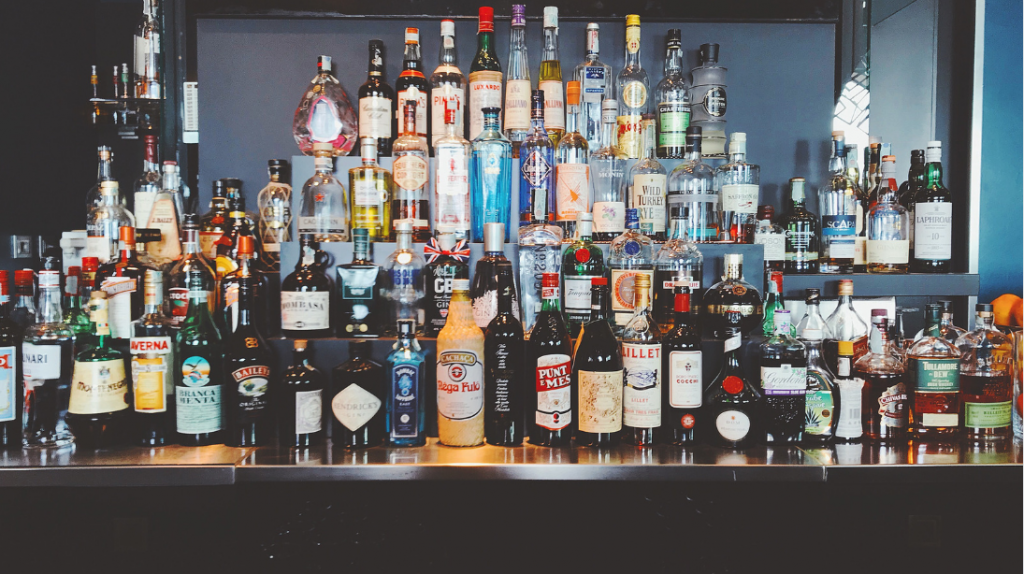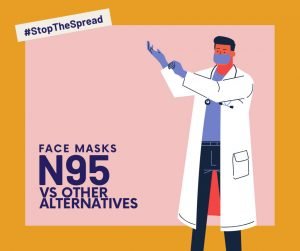Myth: Consuming high strength alcoholic beverages lowers the chance of infection.
The facts:
While it is tempting to think that, as the good weather approaches and the barbecues come out, we can kill coronavirus with a few alcoholic drinks. Unfortunately, there is not a shred of truth to this. In fact, while pure alcohol like bleach is a good disinfectant for household surfaces, it is not suitable for consumption, and drinking it will result in serious illness or death. In fact, as alcohol can lower immune function in the healthy, and particularly in those with kidney or liver disease, it’s probably best to use moderation and fight the urge to overindulge. After all, without your health, you won’t be able to go out for that pint when this is all over. For now, we need to play it safe, exercise and eat immune system boosting foods like ginger, garlic, and kiwis.
Myth: Coronavirus is just like common seasonal flu.
The facts:
Thus far the fatality rate we are seeing in Coronavirus cases is somewhere between two and ten per cent depending on your age group. With the average being close to three per cent. This could be lower as undoubtedly many people who have the virus aren’t showing symptoms; particularly under the thirties. That being said, you don’t need to ignore coronavirus because it may not kill you. Fifteen to twenty per cent of victims end up with permanent lung damage. Young people have a responsibility to report symptoms and quarantine to protect those around them, parents and grandparents who, as we have seen can quickly become seriously ill. Covid-19 is more lethal in many respects: the fatality rate is at least ten times higher; it has an incubation period of at least 14 days vs 2 days for the flue making it deadly for a much longer period and creating silent spreaders. Jeremy Faust, a teaching physician at Harvard explain that in one week in April, the disease killed between 9.5 and 43 times as many people as the humble flu. The bottom line, the Coronavirus is not flu.
Myth: You can’t get infected if you are with someone for less than 15 minutes.
Certainty:
While you, of course, reduce your risk the less time you spend with someone of picking up the virus. There is absolutely no evidence that you can’t get infected in shorter periods of time. Tens of thousands of tiny particles or aerosols are expelled every time we breathe. A study by MIT that you may have seen shows that coronavirus travels as far as eight meters when you exhale. In other words, there is no scientific basis for stating that you need to be in close contact with an infected person for more than fifteen minutes to get sick. In fact, there is mounting evidence that people can pass on Coronavirus when they sneeze, cough, or breathe to anyone in their immediate area.
Myth: Face masks do not help to protect or stop the spread.
What does the science say?
While putting on a face mask is not a guarantee written in stone that you are one hundred per cent safe – viruses can, in rare cases, spread through the eye via tiny particles, called aerosols, as small as 10 microns (one-thousandth of a millimetre) in width masks are a good option to prevent infection. It is nearly impossible to penetrate well fitted, professional-grade, masks. Even three-ply surgical masks prevent transmission through larger particles and droplets. Surgical masks are about five times as effective as social distancing alone at preventing infection. A professional certified respirator mask is about five to seven times as effective as a basic surgical mask at stopping batteries.
We all need to help stop the spread of Coronavirus
contagious airborne diseases.
Myth: There’s no need to be worried as we will have a cure by the end of the year.
What the facts are:
While pharmaceutical companies are indeed racing to produce a vaccine, there is no guarantee that one will be produced. After all, there is still no vaccine for the original SARS from 2003, despite massive investment in producing one. Even with the red tape being cut, creating a safe vaccine, assuming they find one, is still a cumbersome and time-consuming process. They need to do animal experiments, and then a series of trials to make sure it is safe and effective. To the best of our understanding, a year is an optimistic timeline for a working vaccine. We would love to be wrong about this, but we need a level set on expectations. In the meantime, following best practices including hand washing, good home hygiene, wearing a professional-grade mask, or respirator and avoiding crowded places is key. According to Severin Schwan, the CEO of Roche, one of the largest pharmaceutical manufacturers in the world, a working vaccine in eighteen months is an ambitious target as reported in Forbes Magazine.
Myth: the young and healthy are safe, Coronavirus only hurts the elderly, so I can ignore the pandemic.
While it’s true that the majority of those who become ill may only go through mild symptoms, the death rate is staggeringly high relative to the flu. Not only that but there is a serious risk of irreversible lung damage. Young people tend to congregate in crowded spaces: restaurants, universities, and public transit for example, this puts them at high risk as a society and the economy begins to reopen. As a young person, your likelihood of dying is reduced, but not of catching the virus, not getting sick, and spreading it to others. For example, you may have coronavirus and be asymptomatic, but be a threat to those senior citizens riding the bus next to you; that waiter in the restaurant you didn’t know has asthma or that person next to you in the park who happens to be a nurse and will now spread it to the vulnerable. Bottom line: being young, having a strong immune system, eating well, and being fit will improve your odds of beating the virus, however, there is no guarantee. This disease kills young and old alike. We have a duty to protect those more vulnerable than ourselves and where possible not be a silent spreader. You can learn more about asymptomatic transmission and infectious disease in the scientific journal Nature here.
Myth: Herd immunity works and is a viable option.
There are several reasons why it would be a disaster, not to mention it’s unethical. Two things come to mind, a massive increase in cases and deaths and catastrophic damage to the economy. According to a group of scientists at London’s Imperial College, taking no action would lead to a quarter-million deaths, not only because many more people would get sick but because hospitals would be overwhelmed. The knock-on effect would be that people can’t be treated for routine and other emergency services leading to even more chaos. Furthermore, there is evidence that you can be reinfected, so having the virus is no guarantee of immunity. We are already seeing massive unemployment, as we reopen the economy it must be done with abundant caution to prevent a second wave. It’s no time to gamble with this contagion, instead, we need to abide by the cautionary principle. Herd immunity is a fatal strategy, particularly among the most vulnerable among us. You can read more about how common sense and the cautionary principle can be used to eliminate the virus here. For a more detailed economic analysis of the true negative externalities (costs) of the herd immunity approach check out this excellent article by Zachary Bethune, professor of economics at the University of Virginia and Anton Korinek professor of economics at Darden University of Virginia. 

